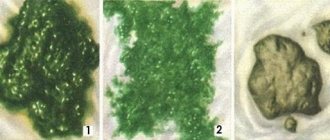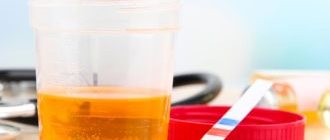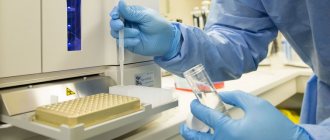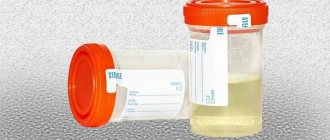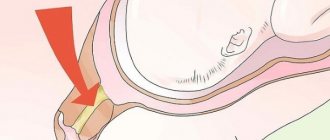A change in the characteristics of a person’s urine is a reason to consult a urologist and conduct a detailed diagnosis. Specialists of the SANMEDEXPERT clinic always help patients in solving such problems.
Urine is a product of filtration of human blood by the kidneys. It contains substances and metabolites that must be eliminated from the body. It is by changing urine parameters that doctors can diagnose diseases and pathological processes.
The color of urine depends on the impurities in its composition. These are mainly uropigments (products of the breakdown of hemoglobin) and uric acid salts, which are in dissolved form. Depending on the content of impurities, urine changes color from faint yellow to straw and deep yellow. If there is polyuria (increased urination), which can be caused by both pathology and heavy drinking, for example in the heat, the kidneys do not have time to increase the density of urine due to absorption, so it becomes lighter.
A change in the color of urine can immediately lead the doctor to believe that the patient has a specific pathology. Identification of other symptoms of the disease, as well as laboratory testing of urine, usually puts an end to the diagnosis of the cause of the changed color.
What can cause urine color to change?
The main reason for changes in the color of urine is a violation of the concentration of substances, pigment and chemical composition. We will tell you how the color of urine can change, and what is the reason for such changes.
- Urine is red. It occurs when fresh, unchanged blood enters it as a result of injuries to the kidneys, urethra, bladder, kidney infarction, damage to the renal pelvis or ureter by a calculus.
- Urine is brown in color. The reason is altered red blood cells that enter the urine through damaged membranes of the glomeruli of the kidneys during glomerulonephritis (their own immune cells damage the glomeruli).
- Urine that is yellow-brown in color indicates a high content of urobilinogen. The cause is parenchymal jaundice.
- Black or dark brown urine is a sign of destruction of red blood cells due to hemolytic anemia (decrease in hemoglobin due to the destruction of red blood cells) due to transfusion of incompatible blood or the action of poisons.
- Pale yellow urine indicates kidney failure or polyuria (excretion of a large volume of urine) in various types of diabetes.
- White or milky urine indicates the presence of pus or fatty inclusions in the urine due to infectious and inflammatory diseases.
What color should a healthy child's urine be?
Initially, it is necessary to understand what color the child’s urine should be normally. Experts say that the color of urine in a healthy child should be yellow. Also, depending on individual indicators, the shade may change: from light to dark and saturated.
The color of urine depends on the amount of pigments, they are also called urochromes. If there are a lot of pigments in your child's urine, this means that it will have a dark color.
It should also be said that a change in the color of urine in the morning is absolutely normal, since at this moment a large amount of pigments is concentrated in the child’s urine. That is, the urine after the night should be dark, this is normal.
Change in urine color due to medication
Some drugs are excreted from the body by the kidneys along with urine. Some of them are capable of changing its normal color:
- a red color may occur when taking the antibiotic rifampicin, antipyretics - amidopyrine and antipyrine, as well as the laxative purgen, which contains phenolphthalein;
- Pink color of urine can be caused by long-term use of high doses of acetylsalicylic acid (aspirin);
- a dark brown color may occur during treatment with phenyl salicylate;
- the blue-green color is caused by triamterene, which is used to enhance renal blood flow;
- Orange urine color occurs when taking the vitamin riboflavin.
Watch the video film “A child’s urine is like water”:
Diabetes can also cause these changes in urine color. In this case, the change in the color of the child’s urine will be provoked by the body’s attempt to remove excess glucose from the body using the urinary system. In this case, the child will drink a lot of water and go to the toilet often.
Kidney failure is also a cause of discolored urine. However, in this case, the color changes due to impaired kidney function, in which case the body may not receive enough fluid, which may cause dehydration in the child.
If diuretics were used in a child during the treatment of any disease, then it is not surprising that the color of the urine has changed to a lighter color.
It is necessary to show the child to the doctor if the color of the urine has changed very much and has become pale, transparent, almost like water. Also if the child’s need for water has increased for no apparent reason. Children who have these symptoms should be seen by a doctor immediately, as they may be the result of a serious illness. In this case, it is better to start treatment as quickly as possible.
Urine color analysis: deviations
When studying deviations, several factors are taken into account:
- change in shade (light or dark);
- color scheme (yellow, red, brown, blue, etc.);
- color intensity (weak or concentrated).
| Color change options | Possible reasons |
| Lack of pigmentation | Occurs against the background of pathological frequency of urination, for example, as a result of:
If a pale yellow tint persists for a long time, then renal failure should be excluded. |
| Dark yellow and dark orange color |
|
| Red color | It is a classic diagnostic sign that indicates an admixture of blood (hematuria). In this case, not only the color, but also the transparency of the urine changes. Scarlet shade (the presence of unchanged red blood cells in the urine) is characteristic of neoplasms of the genitourinary system (oncology, polyps, cysts) and calculi (stones). Blood in the urine also appears as a result of:
The raspberry-brown tint is an admixture of hemoglobin formed during the destruction of red blood cells. This picture is observed in cases of severe intoxication with metal salts, mushrooms, snake venom, etc. |
| Brown color | A consequence of an increase in the concentration of urobilinogen (a product of hemoglobin metabolism). Characteristic of liver dysfunction. The intensity of the shade can be different, from amber to dark brown |
| Greenish or green-brown color | It is quite rare. Observed when
|
| Purple | Occurs against the background of impaired tryptophan metabolism. The following factors must be combined:
|
| Black color |
|
| White color |
|
Factors influencing color and transparency
It is necessary to carefully read the instructions for medications, since some of them color the urine in one or another characteristic color.
| Red | Sulfazole Laxatives Amidopyrine Santonin Antipyrine |
| Pink | Aspirin and its derivatives |
| Dark brown | Salol Phenyl salicylate Naphthol |
| Light green, green-yellow | Senna |
| Blue-green | Triamterene Methylene blue (antiseptic) |
| Bright yellow | Multivitamins |
| Orange | Riboflavin |
Note:
urine may darken while taking nitrofurans, chloroquine and metronidazole.
What does a change in urine color mean?
09.09.2021
Everyone knows that normal human urine is yellow, but very often we wonder what it means when the liquid is a completely different color.
Changes in color, cloudiness, and blood in the urine can cause panic and anxiety because it makes us think that something wrong is happening in the body.
If you're wondering what you can learn just by looking at your urine , read on.
What does normal urine look like??
Under normal conditions, urine can range from translucent yellow to amber and is caused by the pigment urochrome.
Urine is a liquid that is excreted from the body and is a product of cellular metabolism.
The color and amount of urine can be affected by certain foods and drinks, as well as many medical conditions.
If your urine becomes darker, it is usually a sign that you are not getting enough fluids . But this is no cause for alarm.
All you need to do is drink more fluids, preferably water.
The lighter and more transparent the urine , the healthier our body. Light yellow color indicates that our body is properly
hydrated, and this is typical for those who drink water regularly. However, be careful - urine may be a sign
waterlogging or water intoxication. And increased production of clean urine without sufficient water intake may be a sign of diabetes .
Some people often wonder why their urine becomes clear after drinking too much alcohol. There is a simple explanation for this -
Alcohol is a diuretic, meaning it increases the rate of urine . Because drinking alcohol makes you frequent
toilet, your body extracts water from other organs. The problem is that along with the fluid, you throw out important electrolytes from the body.
This is why excessive amounts of alcohol cause poor health or severe headaches.
Abnormalities in urine color
Sometimes the urine comes out a much lighter yellow to amber color. Here are the colors of urine and what they mean:
Green or blue
It has to do with what we ingested. Some foods, drinks, and medications can turn urine these colors, especially if they contain
blue dye. Asparagus also gives your urine a greenish color and also changes its odor.
Red or pink
Some foods that are red in color can cause this change in urine . Laxatives and some medications may also be
cause of red urine . In some cases, however, it is not coloring but blood in the urine . This may be a sign of a disease such as increased
prostate, bladder or even kidney cancer .
Cloudy urine
This may be a sign of urinary tract infection or kidney . In men, this may be due to sperm into the urine .
Orange
Blueberries, beets, rhubarb and some medications with dyes can cause an orange coloration. Sometimes jaundice and dehydration also stain
urine orange.
Foamy urine
Foaming does not affect the color of urine , but it does give it a foamy appearance. Too much foam in the urine is usually a sign of use
too much protein.
When to Seek Medical Help
Often, sharply colored urine is due to the fact that we have eaten or drunk something. Note any color changes and record when
and how often they occur. If we can rule out food or medications as possible factors for the change in urine , you should call your doctor .
Other symptoms that may require seeking medical attention: frequent urination , painful urination , difficulty urinating ,
passing small amounts of urine with normal hydration, waking up at night with an urge to urinate , passing larger amounts
urine than usual.
Published in Articles without category Premium Clinic
